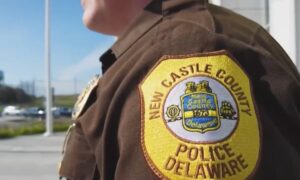Getting injured at a political rally can shake you up in more ways than one. There’s the physical pain, yes, but also confusion, fear, even anger. And then there’s the nagging question: What now?
You went to stand for something. You didn’t expect to end up in the ER or wondering how to pay your bills while nursing an injury.
It doesn’t matter if you were hurt by police using force, assaulted by another attendee, or caught in unsafe conditions; you do have rights. And you may be able to file a claim for compensation.
But the process isn’t always clear-cut. It depends on who caused your injury and how it happened. Here’s a detailed breakdown of what to do next, based on real cases, legal guidance, and everything people in your shoes have already gone through.
Table of Contents
ToggleFirst Things First – Who Might Be Liable?

Before any paperwork or court filings happen, it’s important to figure out who might actually be at fault.
And that depends on the specifics – where the rally took place, who organized it, how the injury occurred, and whether police or private actors were involved.
Let’s break it down.
If Police Used Force Against You
According to Cornell Law School, if your injury came from tear gas, rubber bullets, batons, or physical confrontation with police, you may have a federal claim under 42 U.S.C. § 1983.
This law allows you to sue law enforcement officers or local governments for violating your constitutional rights.
Here’s where those rights come into play:
- First Amendment – protects your freedom to protest.
- Fourth Amendment – guards against unreasonable searches and seizures (including aggressive police action).
- Fourteenth Amendment – guarantees due process.
If you were peacefully protesting and police used force that went beyond what was necessary, you might be looking at a strong civil rights claim.
If the Injury Was Caused by Negligence
Sometimes it’s not about a baton or a bullet, it’s about unsafe conditions that never should’ve existed. Poor crowd control. Zero visible security. Or just plain logistical failure.
In those cases, a premises liability claim might apply. This is where you hold the rally organizers, or the city or property owner, responsible for failing to keep the area safe.
Some common examples:
- No crowd barriers, leading to trampling.
- Too few exits, causing panic and injury during a stampede.
- Failure to secure permits or follow safety guidelines.
A key precedent to note: NAACP v. Claiborne Hardware Co. (1982). The Supreme Court ruled that protest organizers aren’t liable unless they explicitly incited or directed violence.
So, just attending or helping plan a protest doesn’t automatically make someone responsible if things go south.
If You Were Assaulted by a Counter-Protester or Private Security

If someone punched you, tackled you, or hit you with a sign, you can file a personal injury lawsuit against that individual, or in some cases, the group they were with.
Was it a private security guard? If so, their employer might be responsible too. That can shift liability to a company or organization instead of a lone individual.
According to NOLO, under U.S. personal injury law, intentional physical harm, such as punching, tackling, or striking someone with an object, is considered assault and/or battery, and qualifies as an intentional tort. Victims can file a civil lawsuit seeking compensation for medical bills, lost wages, pain and suffering, and other damages.
If the Rally Site Was Unsafe
Injuries caused by environmental hazards—like broken pavement, poorly lit paths, blocked exits, or dangerously slippery stages—can also lead to a premises liability claim.
Who’s responsible?
- Public property: The city or state.
- Private venue: The owner or event organizer.
It all depends on who was supposed to be keeping things in order.
Who’s Liable and Why
| Type of Claim | Who’s Liable | Example Issues | Legal Foundation |
| Excessive Force | Police, Local Government | Tear gas, rubber bullets, baton use | 42 U.S.C. § 1983 + Constitutional Law |
| Negligence | Event Organizers, Government | Poor planning, unsafe crowd control | Premises Liability Laws |
| Assault | Individual Protesters, Private Security | Physical attacks, targeted harassment | Personal Injury Law |
| Dangerous Conditions | Property Owner, City | Tripping hazards, blocked exits | Premises Liability |
What to Do Right After the Injury

Whether you’re bleeding or just bruised, what you do in the hours and days after the rally can make or break your case. Here’s how to handle it, step by step.
1. Document the Scene
Use your phone—if it’s still working—to snap photos or take videos of:
- Your injuries
- The crowd size and layout
- Police presence and tactics
- Hazards or unsafe conditions
If you’re too hurt to do it yourself, ask someone nearby to help. Time-stamped visual evidence is gold when it comes to proving what actually happened.
2. Get Witnesses
Talk to people around you. Get names, phone numbers, or social media handles. Even short quotes or written statements from bystanders can give your case weight.
Tip: Journalists, livestreamers, or activists often document everything. Look for footage on local news sites, YouTube, or TikTok that might have caught your incident.
If you’re in Houston, you can click here to find attorneys who will help gather and preserve this evidence.
3. See a Doctor

Even if you “feel fine,” go to a clinic or ER. Internal injuries, concussions, and psychological trauma don’t always show up right away. Plus, medical records create a paper trail, which courts and insurance companies take seriously.
4. Save Everything
Keep:
- Flyers from the rally
- Medical records and receipts
- Police reports (if any)
- Clothing or gear damaged in the incident
- Screenshots of social media posts or news stories about the rally
Also, try to get a copy of the rally’s permit if possible—it can help prove whether the event was properly managed or not.
Talk to a Lawyer
It’s not just about knowing the rules. It’s about knowing how they apply to your specific case.
An attorney can:
- Figure out which type of claim is strongest
- Request bodycam or surveillance footage
- Push back against “qualified immunity” defenses from police
- Handle negotiations or lawsuits
Many civil rights and personal injury lawyers offer free consultations, so you don’t have to commit or pay anything just to explore your options.
What You Might Be Able to Recover

If your claim succeeds, you could receive compensation for:
- Medical bills: From stitches to surgeries to therapy
- Lost income: Missed work, or even long-term disability
- Pain and suffering: Both physical and emotional
- Punitive damages: If someone acted recklessly or maliciously
The size of the payout depends on how bad the injury was, how clear the evidence is, and who’s being sued.
Recent Settlements from 2020 Protests
- Denver: $14 million to protesters hurt by rubber bullets and pepper spray
- Austin: $13 million for bean-bag round injuries
- Columbus: $5.75 million total in protest-related cases
- Santa Rosa: $2.3 million to settle multiple lawsuits
One Curveball – Shared Fault Laws
Here’s where it can get a little technical. Depending on your state, the amount you can recover might be reduced or erased if you’re found to be partly at fault.
| Fault System | How It Works |
| Pure Comparative Negligence | You can still recover damages, reduced by your fault % (e.g., 20% fault = 80% payout) |
| Modified Comparative Negligence | You only recover if you’re less than 50% (or 51%) at fault |
| Contributory Negligence | No recovery if you’re even 1% to blame (used in only a few states) |
A good lawyer will help you figure out what rules apply where you live—and how to avoid getting blamed unfairly.
A Few Final Considerations
- Deadlines Matter: Each state has a time limit (called a statute of limitations) for filing personal injury or civil rights claims. Some are as short as two years—don’t wait too long.
- Permit Issues Can Matter: If the rally was unpermitted, that might actually help your case against organizers or property owners, especially if they skipped safety precautions.
- Where It Happened Matters: Public vs. private property changes who’s liable and what kind of lawsuit you can file. Public land means city or state liability. Private land might point toward a business or a landlord.
Wrapping It Up
Getting hurt at a political rally is hard enough. Trying to get justice shouldn’t make it worse.
If you’ve suffered injuries—physical or psychological—because someone failed to do their job, used force unfairly, or put you in a dangerous situation, you’re not powerless. Plenty of people have successfully held police departments, city governments, and private actors accountable.
Start by gathering your evidence. See a doctor. Talk to witnesses. Then reach out to a lawyer who knows this stuff inside and out. You don’t need to take on the legal system alone.
You stood up for something. You deserve the chance to stand tall again, with the help you need and the accountability they owe you.
Related Posts:
- How Much Money Can You Get For A Personal Injury…
- Safest Countries in the World in 2025 - GPI…
- Armed Forces Organizations, 500+ Veterans Announce…
- 10 Key Employment Rights Workers Should Know in the…
- 8 Biggest Personal Injury Settlements in US History
- 26 Most Dangerous Cities in US - Updated Statistics for 2025








